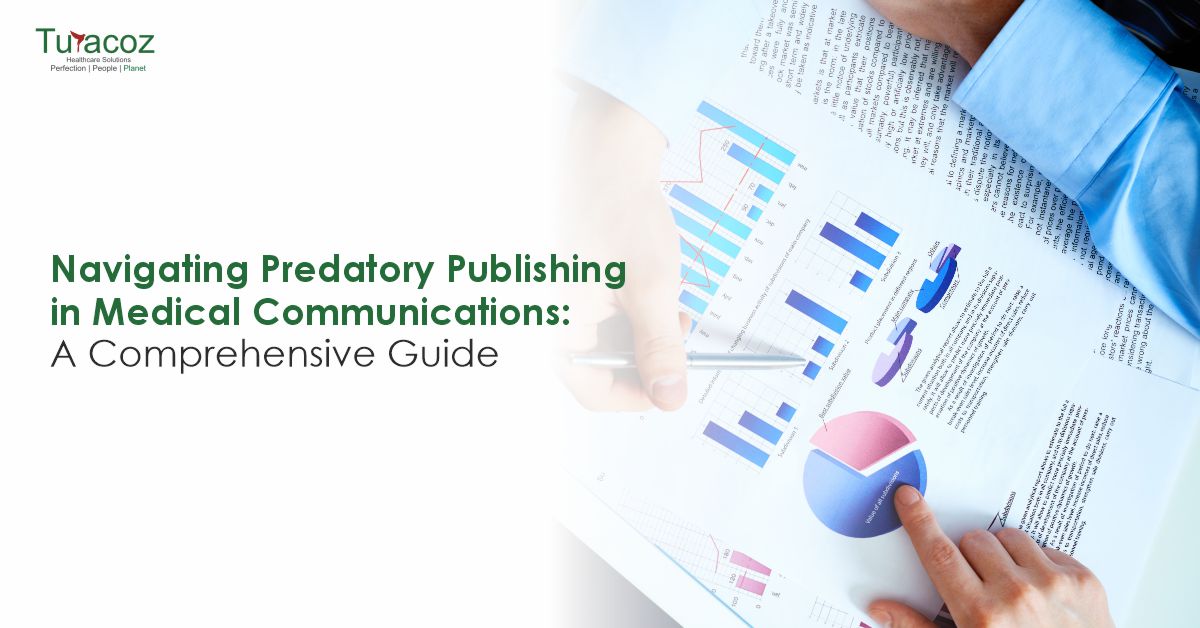Medical writers find themselves at a critical juncture in the scientific and medical communications field. The rise of predatory journals poses a significant threat to the credibility of research and the careers of those who engage with them. This guide aims to illuminate the challenges of predatory publishing, offering insights, strategies, and resources to help medical writers and those involved in medical writing services navigate this complex issue with integrity and caution.
What is Predatory Publishing
Predatory publishing is a concerning byproduct of the open-access publishing model, that exploits the academic pressure to publish, undermining the credibility of scientific research and medical communications. This issue holds particular importance for medical writers and providers of scientific publishing services, as the integrity of published research directly impacts patient care and scientific advancement. Understanding and avoiding predatory publishing practices is imperative for maintaining the quality and credibility of medical communications.
Exploiting the academic and financial pressures on researchers and institutions, predatory publishing offers a fast track to publication without the rigorous peer review expected from reputable journals. This practice is particularly concerning as it undermines the foundation of evidence-based medicine. The troubling growth in predatory journals emphasizes the need for vigilance among those involved in medical communications.
Evolution of Predatory Journals
The journey into the depths of predatory publishing begins with its origins in the open-access movement, which promised a democratized approach to scientific knowledge dissemination. However, this noble intent was quickly overshadowed by the rise of predatory publishers, who saw an opportunity to exploit academic pressure for profit. Through a series of milestones and studies, how predatory journals have mushroomed can be traced, which casts a substantial shadow over the landscape of scientific publishing.
Click Here:- Transformative Journey in Medical Communication: A Comprehensive Case Study
How Predatory Journals Lure Authors
Predatory publishers employ a range of deceptive tactics to ensnare unsuspecting authors. From manipulating impact factors and misrepresenting academic credentials to fabricating editorial boards, these journals dangle the carrot of swift publication to lure researchers into their trap. By dissecting these techniques, we aim to arm authors with the knowledge to identify and avoid these predatory practices.
Impact of Predatory Publishing
The implications of predatory publishing are far-reaching. Scientific research and evidence-based medicine rely on the integrity of published findings. Predatory journals, with their lack of rigorous peer review, pollute the scientific record with unverified and potentially misleading data. For authors, publishing in such journals can tarnish reputations and hinder career progression. Financially, the costs can be substantial, with institutions and researchers spending millions on article processing charges that do not further the cause of scientific advancement.
Identifying Predatory Journals
Identifying predatory journals requires vigilance and a critical eye. Red flags include a lack of clear information about the editorial process, unusually rapid publication times, and solicitations for submissions through spam emails. Legitimate journals are often indexed in reputable databases and adhere to recognized standards such as those set by the Committee on Publication Ethics (COPE). Evaluating journal metrics, while useful, should be done with caution, as some predatory publishers may manipulate these figures to appear more reputable.
Ethical and Legal Considerations
Publishing in predatory journals not only raises ethical concerns but can also have legal ramifications. The dissemination of flawed or fabricated data can have serious consequences in the medical field, potentially leading to legal issues for authors. Adherence to publishing ethics and standards is not just a matter of principle but a legal imperative, underscoring the importance of due diligence before submission.
How to Protect Yourself
To safeguard against predatory publishers, authors should thoroughly vet journals before submission. This includes checking the journal’s presence in reputable databases, assessing the transparency of its peer review process, and seeking advice from professional networks and mentors. Tools such as Think. Check. Submit. offer valuable checklists to help evaluate a journal’s legitimacy. Trust your instincts; if uncertain, discuss it with your peers and colleagues.
Your Choice for Publications
Fortunately, there are numerous reputable open-access and traditional publishing options available. Leveraging institutional support can also facilitate access to these platforms, ensuring that research is disseminated through channels that uphold the principles of scientific integrity. The peer review process, despite its challenges, remains a cornerstone of this integrity, providing an avenue for the critical evaluation and improvement of scientific work.
The Future of Publishing
The landscape of scientific publishing continues to evolve, with emerging trends aimed at combating predatory practices. Legislative efforts, academic initiatives, and technological advancements are all playing a role in securing the integrity of scholarly publishing. As these efforts gain momentum, the hope is that predatory journals will find it increasingly difficult to operate, paving the way for a more transparent and ethical publishing ecosystem.
The fight against predatory publishing is a collective one, requiring the vigilance and engagement of all stakeholders in the scientific community. For medical writers, staying informed and adherent to reputable publishing practices is not just a professional responsibility—it’s a moral one. By doing so, they contribute to the preservation of scientific integrity and the advancement of medical research. Hope this guide serves as a roadmap, empowering medical writers to navigate the complexities of predatory publishing with confidence and caution.
Click Here:- From Research to Regulation: Diverse Types of Medical Writing Documents
Additional Resources
For those seeking further guidance, a wealth of resources is available to assist in the evaluation of journal legitimacy. Databases such as PubMed, Scopus, and the Directory of Open Access Journals (DOAJ) provide a starting point for identifying reputable journals. Professional organizations, including the International Committee of Medical Journal Editors (ICMJE) and the World Association of Medical Editors (WAME), offer guidelines and networks to support medical writers in their publishing endeavors. Additionally, resources like Retraction Watch can help authors stay informed about retractions and controversies within the scientific community, further aiding in the discernment of credible journals.
In navigating the challenges of predatory publishing, knowledge is power. Armed with the right information and resources, medical writers can make informed decisions, uphold ethical standards, and contribute to the integrity and advancement of medical research.
Continuous Professional Development
The importance of continuous professional development (CPD) cannot be overstated. As the field adapts to new challenges, including the rise of predatory journals, staying informed and skilled is paramount for professionals committed to excellence and integrity in their work. It represents a commitment to lifelong learning, ensuring that medical writers and those involved in scientific publishing remain at the forefront of best practices, ethical standards, and the latest research methodologies. This ongoing education is not just about acquiring new skills but also about deepening the understanding of complex issues that impact the field, such as predatory publishing practices.
Structured educational programs offer a formal avenue for CPD, providing comprehensive training that covers a wide array of topics relevant to medical writing and publishing. Courses like the “Comprehensive Certificate Course in Medical Writing” offered by Turacoz Healthcare Solutions are designed to equip participants with a deep understanding of the medical writing process, from research and writing to publication and beyond. It includes modules on ethics, peer review, and how to differentiate between legitimate and predatory journals, thereby arming professionals with the knowledge needed to navigate the publishing landscape wisely.
The benefits of engaging in CPD are manifold. For individuals, it enhances job performance, boosts career prospects, and fosters a sense of professional fulfillment. For the broader scientific community, the commitment of medical writers and publishers to continuous learning helps to uphold the integrity of scientific communication, ensuring that research findings are disseminated accurately and ethically.
Want to know more about our courses contact us at trainings@turacoz.com now!






























